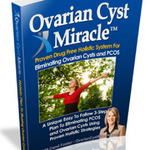NYU Langone gynecologist Dr. Taraneh Shirazian on ovarian cyst awareness
ovarian cyst December 1st. 2021, 4:00pmWomen are using social media to bring awareness to a common yet rarely-talked-about condition: ovarian cysts, which affect about three million women each year in the U.S. Most are benign and go away on their own, but in some cases, they can grow and lead to serious complications – rupturing or causing twisting of the ovary. NYU Langone gynecologist Dr. Taraneh Shirazian joined “CBS This Morning” to discuss ovarian cyst awareness.
Each weekday morning, “CBS This Morning” co-hosts Gayle King, Anthony Mason and Tony Dokoupil deliver two hours of original reporting, breaking news and top-level newsmaker interviews in an engaging and informative format that challenges the norm in network morning news programs.
Subscribe to “CBS This Morning” on YouTube: https://www.youtube.com/user/CBSThisMorning
Watch CBSN live: http://cbsn.ws/1PlLpZ7c
Download the CBS News app: http://cbsn.ws/1Xb1WC8
Follow “CBS This Morning” on Instagram: http://bit.ly/1Q7NGnY
Like “CBS This Morning” on Facebook: http://on.fb.me/1LhtdvI
Follow “CBS This Morning” on Twitter: http://bit.ly/1Xj5W3p
Subscribe to our newsletter: http://cbsn.ws/1RqHw7T
Try Paramount+ free: https://bit.ly/2OiW1kZ
For video licensing inquiries, contact: licensing@veritone.com
Video Rating: / 5
Should I be concerned about ovarian cysts? In this video, Mark P. Trolice, M.D., a board-certified reproductive endocrinology and infertility specialist and founder of Fertility CARE: The IVF Center describes the different types of cysts and why most of them are not a cause for worry.
“Ovarian cysts cause more stress and confusion than probably anything else that we work with,” says Dr. Trolice.
“Any woman in their reproductive years must have cysts on her ovaries. Cysts come in various sizes, shapes, and appearances. But all reproductive women need to have follicular cysts that represent microscopic eggs.”
“When we do an ultrasound, we count the number of small cysts on the ovary. They represent microscopic eggs, and we want to see them in good numbers. The less antral follicles we see, the greater the ovarian aging (called an antral follicle count (AFC). When the follicles are less than 10 mm, there is nothing to worry about.”
“What about a growing follicular cyst?” asks Dr. Trolice.
“That’s what we do when we stimulate you with clomiphene citrate or letrozole or Genotropin injections. We are pushing those little antral follicles to get larger to grow mature eggs.”
“What about if we see a cyst that is neither of those?” Dr. Trolice continues.
“Those cysts can be either simple or complex. The simple ones look just like a little circle; it’s black inside with clear fluid and is nothing to worry about, as long as you’re not having any pain. Sometimes you can have cysts on the side of your ovary, called a para ovarian cyst or a cyst on the side of the tube called a paratubal cyst – these are also no cause for concern.”
“There is a hemorrhagic cyst which occurs every time a woman ovulates. When you release the egg from the follicular cyst that‘s growing, the egg gets released from the surge of the pituitary hormone (HCG trigger), and that cyst left behind in the ovary is making progesterone and other hormones critical for implantation. We’ve got to have that cyst (known as a corpus luteum), which develops from the time of ovulation until your next period. When you get your period, sometimes that cyst can hang around causing some discomfort, minor bleeding, or hemorrhaging requiring surgery. When you look at the ultrasound of a hemorrhagic cyst, it may look scary or very simple. But the best thing to do is wait for six to eight weeks on average to see if it goes away.”
“The cysts we get a little more concerned about are complex cysts,” says Dr. Trolice. “They appear solid or mixed simple and solid. Complex cysts are not common, but if they hang around and do not resolve, we’ll have you see your gynecologist for evaluation. It doesn’t mean that you have cancer, but we need to examine it if it doesn’t go away.”
“Two cysts that we see a lot of are endometriosis cysts and dermoid cysts. Endometriosis cysts sometimes implant in the ovary and have a ground-glass appearance, which is very symmetrical smooth but not simple. Endometriosis cysts are often associated with pain and potentially represent significant endometriosis inside. If you don’t have any pain, we leave those cysts alone as well.”
“A dermoid cyst is an embryological cyst that has many different cell lines in it. It could have hair inside, teeth, neurological tissue, anything. Size is important. We usually leave things alone that are less than 5 cm particularly if they are not causing any symptoms.”
“The bottom line is that not all cysts are bad,” concludes Dr. Trolice. “So when we say cysts in the office, please don’t get anxious about it unless we tell you that there is cause for concern.”
For more visit https://www.myfertilitycare.com/
To learn more about Dr. Trolice visit http://www.myfertilitycare.com/mark-trolice-md/
To learn more about Fertility CARE fertility services visit https://www.myfertilitycare.com/our-services/
To learn more about IVF visit https://www.myfertilitycare.com/ivf/
To learn more about egg freezing visit https://www.myfertilitycare.com/egg-freezing/
To learn more about intracytoplasmic sperm injection (ICSI) visit https://www.myfertilitycare.com/intracytoplasmic-sperm-injection-icsi/
To learn more about IUI visit https://www.myfertilitycare.com/infertility-treatment-options/
Dr. Mark P. Trolice is the Director of Fertility CARE in Winter Park, Fla., the most comprehensive fertility center in the Southeast. A leader in the field of reproductive endocrinology, Dr. Trolice has helped countless patients become parents in central Florida since 1999.
In addition to his work at Fertility CARE, Dr. Trolice is also the Clinical Associate Professor in the Department of Obstetrics & Gynecology (OB/GYN) at the University of Florida in Gainesville and the University of Central Florida in Orlando.
 Email This Post
Email This Post
Compensation Disclosure
-
This site receives compensation for referred sales of some or all mentioned products.

































































